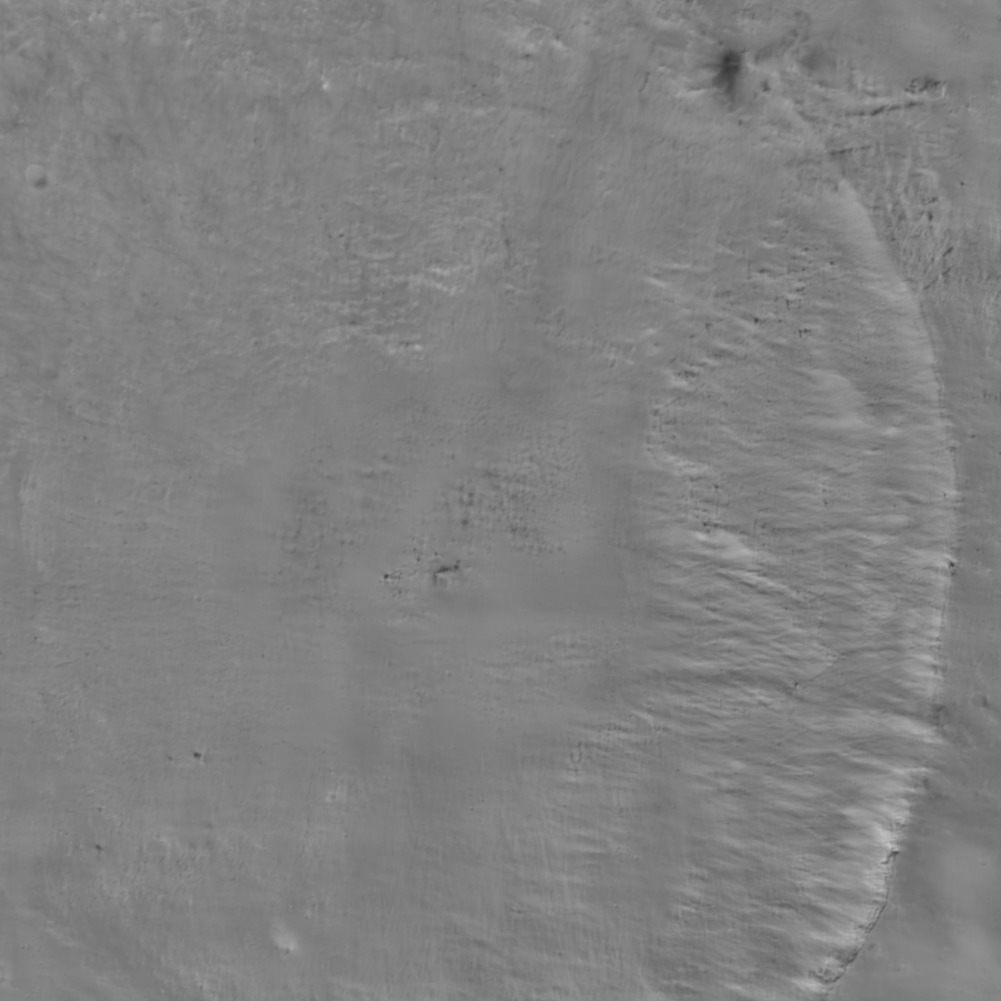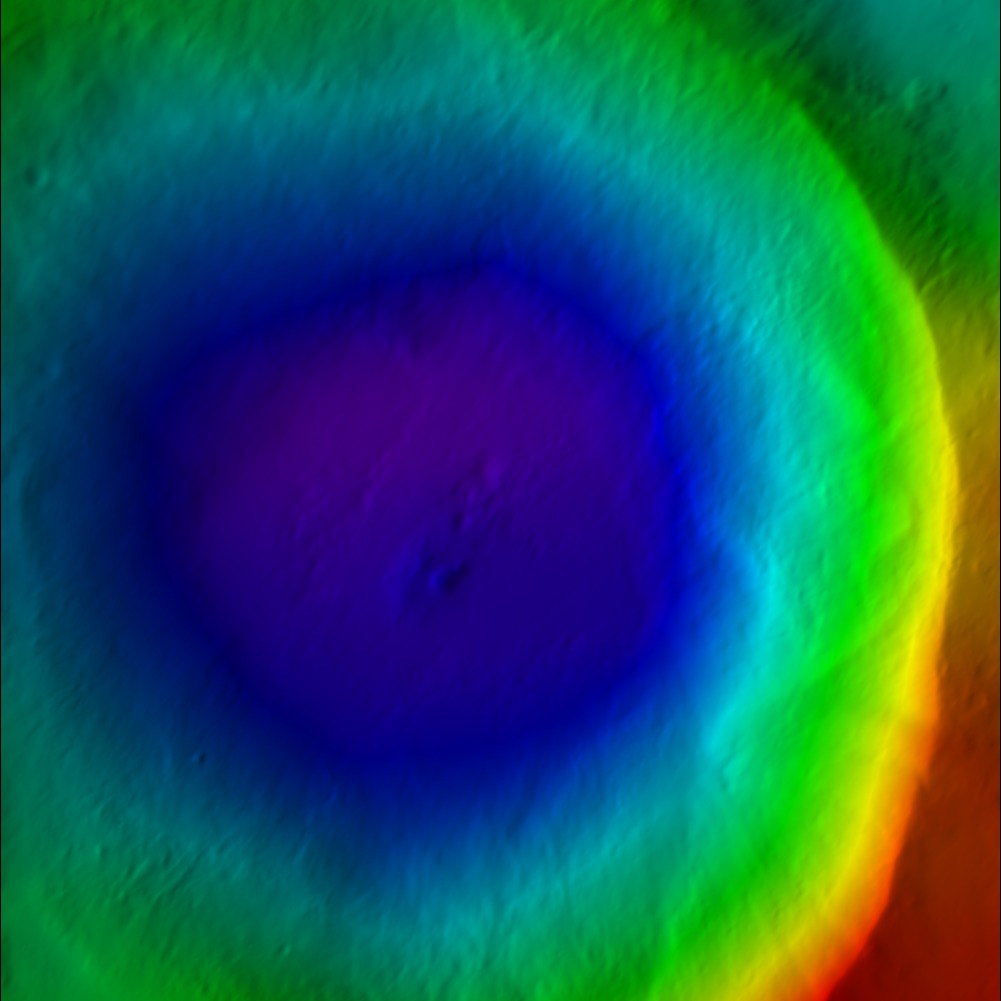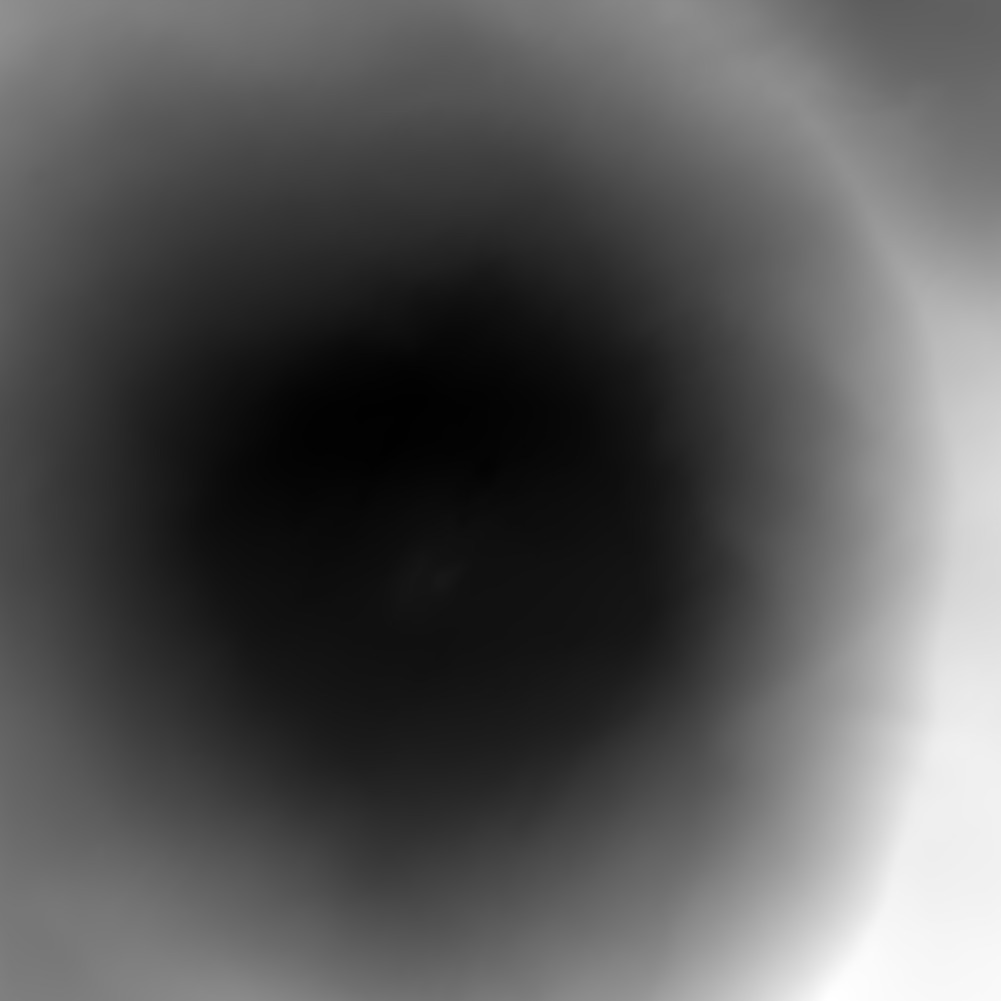|
Size: 1021
Comment:
|
Size: 8014
Comment:
|
| Deletions are marked like this. | Additions are marked like this. |
| Line 6: | Line 6: |
| This reads the Zmap files and makes the resulting map line by line. It creates albedo and DTM maps of the given region. | This reads the Zmap files and makes the resulting map line by line. It creates a suite of data files for a bigmap (REFMAP). It creates a raw (simple binary file) of a 2D matrix for the scaled albedo (sample_ALB) and the topography (DTM). It also creates images (pgm format) of the albedo, topography and color scaled topography. |
| Line 8: | Line 8: |
| === Requires === * [[MAPFILES]]/ - a directory containing the full suite of maplets; * [[MAPLIST.TXT]] - a file listing the map files; === Output === * <BIGMAP>_DTM.pgm - Bigmap pgm image file * <BIGMAP>_DTM.raw - Bigmap raw image file * <BIGMAP>_COL.ppm - Bigmap raw image file * <BIGMAP>_ALB.pgm - Big albedo map pgm image file * <BIGMAP>_ALB.raw - Big albedo map raw image file |
|
| Line 55: | Line 65: |
| * Albedo {{attachment:sample_ALB.jpg}} * Color DTM {{attachment:sample_COL.jpg}} * Greyscale DTM {{attachment:sample_DTM.jpg}} |
|
| Line 61: | Line 80: |
== From spheremapsB.f == {{{ C This procedure re-samples the surface vectors providid ba a set of C BIGMAPs onto a sphere with a radius characteristic of the body. Id C does so one outputline at a time so that arbitrarily large maps can C be produced. C C The procedure produces three types of map. A simple digital C elevation map (DEM) that provides te height above (or below) the C reference sphere at each point in either 8- or 16-bit format, a C shaded relief map (color coded with shading), and a relative albedo C map. This latter should be taken with a grain of salt, since the C albedo solution from SPC is quite crude. The DEM and albedo map are C presented as both raw and as .pgm files, while the shaded relief is C a .ppm file. The raw files are included because they are easier to C ingest into other systems such as ISIS. The .pgm DEM file has a C header that includes the ancillary information for the projection. C It can be read by any text editor. C C Three types of projection are recognized by spheremapsB. Orthographic and C stereographis are usually used for polar projections while equirectangular C (cylindrical) is used for oher regions, including the global DEM. The program C first asks for: C C central latitude and east longitude in degrees, C the scale (km/px), C the half-sizes in pixel and line directions, C ref radius (km), C tolerance (km) C C The last entry is a search limit in case one of the maps has some bad data in it C and is displaced too far from the expected height. C C The user then enters a name for the map, MAPNM. Note that his does not have to be C 6-characters. Then the user chooses the projection: C C a. orthographic C b. stereographic C c. equirectangular C C If a or b is chosen, the user enters a cone angle. For example, if the cone angle C is 70 degrees and the central latitude is 90 degrees, then the map will cover from C 20 degrees north to the pole. If c is chosen, the user is asked for a reference C latitude. At that latitude, the pixels are square at a resolution equal to the C scale chosen above. Poleward, the pixels are at higher resolution in the east- C west direction. If the longitude range of the plot is to be DLON and Q is the C half-size in pixels in the east-west direction, then C C 2*Q*scale=R0*cos(Rlat)*DLON*pi/180 C C In particular, if we want a global DEM at, say 32 pixels per degree then DLON=360, C 2*Q=360*32 and if Rlat=0 then scale=R0*pi/32*180. C C After deciding on the type of projection and its parameters, the user is asked: C C a. 8 bit DTM C b. 16 bit DTM C C where if the latter is chosen the data will be "unsigned short" (MSB). The next C choice is: C C Fix hmin, hmax? (y/n) C C If 'n' is chosen, the minimum and maximum heights will be those found for the C entire map. On occasion, especially if multiple maps are used to cover the body, C we want to use the same values for all maps and if ''y is chosen we enter those C values next. C C Set max slope (deg) C C The shaded relief map MAPNM_COL.ppm has both color coded heights and slopes C determined by pixel differencing so the maps appear to be illuminated from the C left. The maximum slope, usually set to 45 degrees, sets the scale for the C apparent illumination. A final choice is: C C Lat/Lon markings? (y/n) C C If 'y' is chosen, the user inputs spacings for lines of constant latitude and longitude C to be marked in white on the MAPNM_COL.ppm. C C The MAPNM_DEM.pgm file has a header that includes ancillary information for the C projection. For equirectangular projection the header looks like: C C P5 C #PROJECTION = EQUIRECTANGULAR C #REFERENCE RADIUS = 255.00000 C #REFERENCE LATITUDE = 0.00000 C # -90.0000000464 0.0000000000 90.0000000464 MN, CT, MX LAT C # -180.0000000928 0.0000000000 180.0000000928 MN, CT, MX LON C # 17281 8641 IMAX, JMAX C # 0.9272061656D-01 0.1235028039D-02 SCL, HTSCL C # -0.4309964495D+02 0.3783668255D+02 HTMIN, HTMAX C # 0.2550000000D+03 0.0000000000D+00 0.0000000000D+00 VLM C # 0.0000000000D+00 0.0000000000D+00 -0.1000000000D+01 UX C # -0.0000000000D+00 0.1000000000D+01 0.0000000000D+00 UY C # 0.1000000000D+01 0.0000000000D+00 0.0000000000D+00 UZ C 17281 8641 C 65535 C C where the lines without # specify the .pgm format. For orthographic and stereographic C projections, the heaer looks like: C C P5 C #PROJECTION = STEREOGRAPHIC C #REFERENCE RADIUS = 250.00000 C # 10401 10401 IMAX, JMAX C # 0.1000000000D+00 0.1235079957D-02 SCL, HTSCL C # -0.3810336140D+02 0.4283636848D+02 HTMIN, HTMAX C # 0.0000000000D+00 0.0000000000D+00 0.2500000000D+03 VLM C # 0.1000000000D+01 0.0000000000D+00 0.0000000000D+00 UX C # 0.0000000000D+00 0.1000000000D+01 0.0000000000D+00 UY C # 0.0000000000D+00 0.0000000000D+00 0.1000000000D+01 UZ C 10401 10401 C 65535 }}} |
spheremapB
(compiled by JRW from material by EEP)
This reads the Zmap files and makes the resulting map line by line. It creates a suite of data files for a bigmap (REFMAP). It creates a raw (simple binary file) of a 2D matrix for the scaled albedo (sample_ALB) and the topography (DTM). It also creates images (pgm format) of the albedo, topography and color scaled topography.
Requires
MAPFILES/ - a directory containing the full suite of maplets;
MAPLIST.TXT - a file listing the map files;
Output
<BIGMAP>_DTM.pgm - Bigmap pgm image file
<BIGMAP>_DTM.raw - Bigmap raw image file
<BIGMAP>_COL.ppm - Bigmap raw image file
<BIGMAP>_ALB.pgm - Big albedo map pgm image file
<BIGMAP>_ALB.raw - Big albedo map raw image file
Input - stdin
- What it asks for
input ltd (deg), elon (deg), scale (km/px), half-sizes (px/ln), ref radius (km), tolerance (km) 0, 0 0.06250 500, 500 265 50 input map name ZN0000 a. orthographic b. stereographic c. equirectangular c Enter reference latitude 0 a. 8 bit DTM b. 16 bit DTM a Enter i,j,h map shift (m) (eg map-lola) 10.098592111467099 20.849462131360269 0, 0, 0 Fix hmin, hmax? (y/n) n Set max slope (deg) 60 Lat/Lon markings? (y/n) n
- Albedo

- Color DTM

- Greyscale DTM

Output
<mapname>_ALB.pgm - albedo in bitmap format
<mapname>_ALB.raw - albedo in raw format
<mapname>_COL.ppm
<mapname>_DTM.pgm - digital terrain model - bitmap format
<mapname>_DTM.raw - digital terrain model - raw format
From spheremapsB.f
C This procedure re-samples the surface vectors providid ba a set of C BIGMAPs onto a sphere with a radius characteristic of the body. Id C does so one outputline at a time so that arbitrarily large maps can C be produced. C C The procedure produces three types of map. A simple digital C elevation map (DEM) that provides te height above (or below) the C reference sphere at each point in either 8- or 16-bit format, a C shaded relief map (color coded with shading), and a relative albedo C map. This latter should be taken with a grain of salt, since the C albedo solution from SPC is quite crude. The DEM and albedo map are C presented as both raw and as .pgm files, while the shaded relief is C a .ppm file. The raw files are included because they are easier to C ingest into other systems such as ISIS. The .pgm DEM file has a C header that includes the ancillary information for the projection. C It can be read by any text editor. C C Three types of projection are recognized by spheremapsB. Orthographic and C stereographis are usually used for polar projections while equirectangular C (cylindrical) is used for oher regions, including the global DEM. The program C first asks for: C C central latitude and east longitude in degrees, C the scale (km/px), C the half-sizes in pixel and line directions, C ref radius (km), C tolerance (km) C C The last entry is a search limit in case one of the maps has some bad data in it C and is displaced too far from the expected height. C C The user then enters a name for the map, MAPNM. Note that his does not have to be C 6-characters. Then the user chooses the projection: C C a. orthographic C b. stereographic C c. equirectangular C C If a or b is chosen, the user enters a cone angle. For example, if the cone angle C is 70 degrees and the central latitude is 90 degrees, then the map will cover from C 20 degrees north to the pole. If c is chosen, the user is asked for a reference C latitude. At that latitude, the pixels are square at a resolution equal to the C scale chosen above. Poleward, the pixels are at higher resolution in the east- C west direction. If the longitude range of the plot is to be DLON and Q is the C half-size in pixels in the east-west direction, then C C 2*Q*scale=R0*cos(Rlat)*DLON*pi/180 C C In particular, if we want a global DEM at, say 32 pixels per degree then DLON=360, C 2*Q=360*32 and if Rlat=0 then scale=R0*pi/32*180. C C After deciding on the type of projection and its parameters, the user is asked: C C a. 8 bit DTM C b. 16 bit DTM C C where if the latter is chosen the data will be "unsigned short" (MSB). The next C choice is: C C Fix hmin, hmax? (y/n) C C If 'n' is chosen, the minimum and maximum heights will be those found for the C entire map. On occasion, especially if multiple maps are used to cover the body, C we want to use the same values for all maps and if ''y is chosen we enter those C values next. C C Set max slope (deg) C C The shaded relief map MAPNM_COL.ppm has both color coded heights and slopes C determined by pixel differencing so the maps appear to be illuminated from the C left. The maximum slope, usually set to 45 degrees, sets the scale for the C apparent illumination. A final choice is: C C Lat/Lon markings? (y/n) C C If 'y' is chosen, the user inputs spacings for lines of constant latitude and longitude C to be marked in white on the MAPNM_COL.ppm. C C The MAPNM_DEM.pgm file has a header that includes ancillary information for the C projection. For equirectangular projection the header looks like: C C P5 C #PROJECTION = EQUIRECTANGULAR C #REFERENCE RADIUS = 255.00000 C #REFERENCE LATITUDE = 0.00000 C # -90.0000000464 0.0000000000 90.0000000464 MN, CT, MX LAT C # -180.0000000928 0.0000000000 180.0000000928 MN, CT, MX LON C # 17281 8641 IMAX, JMAX C # 0.9272061656D-01 0.1235028039D-02 SCL, HTSCL C # -0.4309964495D+02 0.3783668255D+02 HTMIN, HTMAX C # 0.2550000000D+03 0.0000000000D+00 0.0000000000D+00 VLM C # 0.0000000000D+00 0.0000000000D+00 -0.1000000000D+01 UX C # -0.0000000000D+00 0.1000000000D+01 0.0000000000D+00 UY C # 0.1000000000D+01 0.0000000000D+00 0.0000000000D+00 UZ C 17281 8641 C 65535 C C where the lines without # specify the .pgm format. For orthographic and stereographic C projections, the heaer looks like: C C P5 C #PROJECTION = STEREOGRAPHIC C #REFERENCE RADIUS = 250.00000 C # 10401 10401 IMAX, JMAX C # 0.1000000000D+00 0.1235079957D-02 SCL, HTSCL C # -0.3810336140D+02 0.4283636848D+02 HTMIN, HTMAX C # 0.0000000000D+00 0.0000000000D+00 0.2500000000D+03 VLM C # 0.1000000000D+01 0.0000000000D+00 0.0000000000D+00 UX C # 0.0000000000D+00 0.1000000000D+01 0.0000000000D+00 UY C # 0.0000000000D+00 0.0000000000D+00 0.1000000000D+01 UZ C 10401 10401 C 65535
